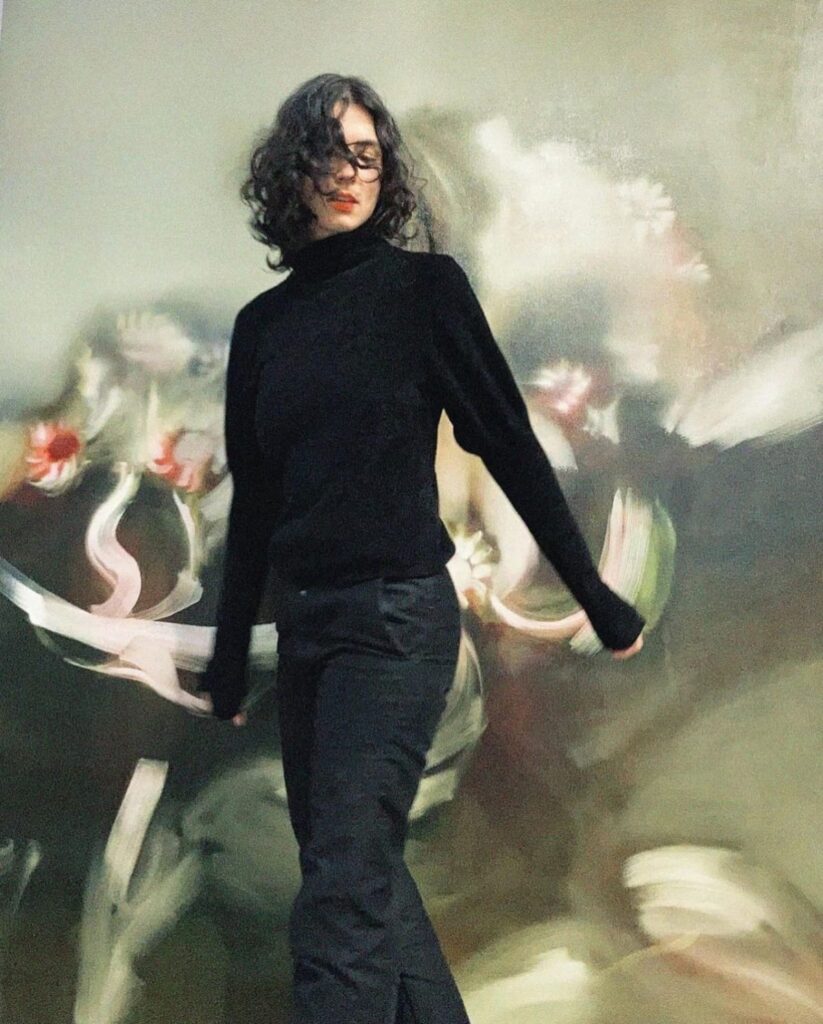The Renaissance of French Figurative Painting
Under the Grand Palais glass dome, thirty artists prove French figurative painting refuses extinction. Veterans like Robert Combas maintain their raw energy while Marlène Mocquet’s ceramic hybrids burst through canvas surfaces. Twenty-six-year-old Milène Sanchez makes her own pigments, creating flowers that balance precision and abstraction. IMMORTAL exhibition shows how traditional forms address contemporary concerns without abandoning France’s rich artistic heritage.
—
The IMMORTAL exhibition at Art Paris 2025 boldly declares that French figurative painting isn’t merely surviving. It’s experiencing a remarkable renaissance! Bringing together thirty distinctive artists, this carefully curated showcase reveals the extraordinary diversity and continued relevance of figurative tradition in contemporary French art.
The historic glass dome of the Grand Palais bathes these diverse works in natural light, creating an ideal setting after the venue’s 2024 renovation. Within this iconic space, contemporary French figurative painting reveals its remarkable breadth.
Robert Combas, a key figure from the 1980s “Figuration Libre” movement, dominates one gallery with canvases that pulse with caustic humor and raw energy. It’s a visual language that is merging Art Brut sensibilities with pop cultural references that has lost none of its edge over four decades.
I was totally taken by Marlène Mocquet’s works. She explores the boundaries between painting and sculpture through her ceramic-painting hybrids. Works like “La Terre des Dinosaures” (2024) create unsettling microcosmic landscapes where glossy, bulbous forms emerge from canvas surfaces. Her hybrid methodology speaks to a broader trend among contemporary French figurative painters who refuse medium purity in favor of expanded material vocabularies.
And Laurent Proux takes figuration into more conceptual territory, fragmenting the human body into visual puzzles that challenge perception. His large-scale works occupy the fertile territory between representation and abstraction, with recognizable bodily elements that gradually dissolve into formal arrangements of color and shape. This approach explores figuration’s boundaries rather than simply applying its conventions.
A more classical orientation defines Thomas Lévy-Lasne work, transforming ordinary moments into extraordinary paintings through technical virtuosity. His attention to light and atmospheric detail achieves a timeless quality while depicting distinctly contemporary scenes. This synthesis of traditional technique with modern subject matter creates a compelling dialogue between past and present.
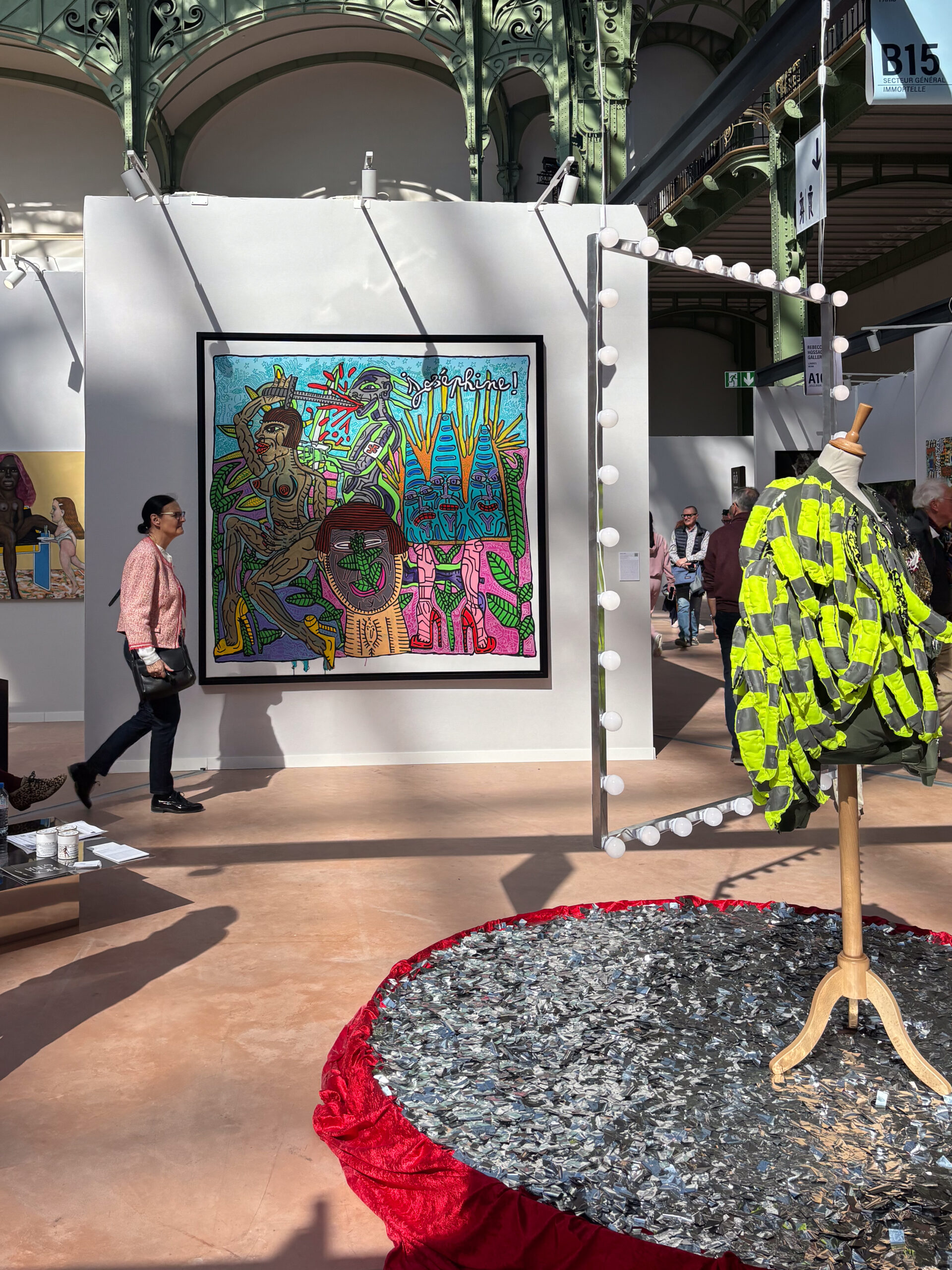
The exhibition gives significant space to emerging artists who are redefining French figurative painting for a new generation. At just 26, Milène Sanchez creates floral compositions that seem to dissolve before viewers’ eyes—ephemeral blooms captured in states of becoming or unbecoming. What distinguishes her practice is her commitment to material authenticity, Sanchez creates her own pigments from natural sources, resulting in colors with unusual depth and subtlety.
Her largest work, “Sans Titre” (2024), exemplifies her approach—a monumental piece featuring what appears to be an orange iris set against a greenish background, where the flower rendered in extraordinary detail at its center gradually dissolves into abstract washes at its edges. This visual strategy becomes a compelling metaphor for memory and perception, demonstrating how younger artists are incorporating contemporary concerns around materiality and environmental consciousness into figurative traditions.
Other emerging artists featured include Marion Bataillard, whose psychologically charged tableaux draw from both Northern Renaissance painting and surrealist traditions, and Yesmine Ben Khelil, whose delicate works on paper blend North African visual traditions with contemporary French approaches. Their inclusion alongside established figures speaks to the curators’ commitment to capturing the full spectrum of French figurative painting today.
The exhibition includes several artists who bring Art Brut influences into contemporary practice. Beyond Combas, figures like Stéphane Pencréac’h and Françoise Vergier demonstrate the continuing impact of outsider art aesthetics on French painting today.
From Philippe Cognée’s encaustic landscapes that blur surroundings into melting abstractions to Françoise Pétrovitch’s watercolor figures suspended in psychological ambiguity, IMMORTAL exhibition refuses any simple definition of what constitutes figuration in contemporary French art.
IMMORTAL makes a persuasive case for figurative painting’s continued relevance in French contemporary art. These thirty artists show how traditional forms can address contemporary concerns while honoring France’s rich artistic heritage. The Paris art scene, with this exhibition at its center, reaffirms figurative painting’s enduring vitality and capacity for continuous reinvention.
